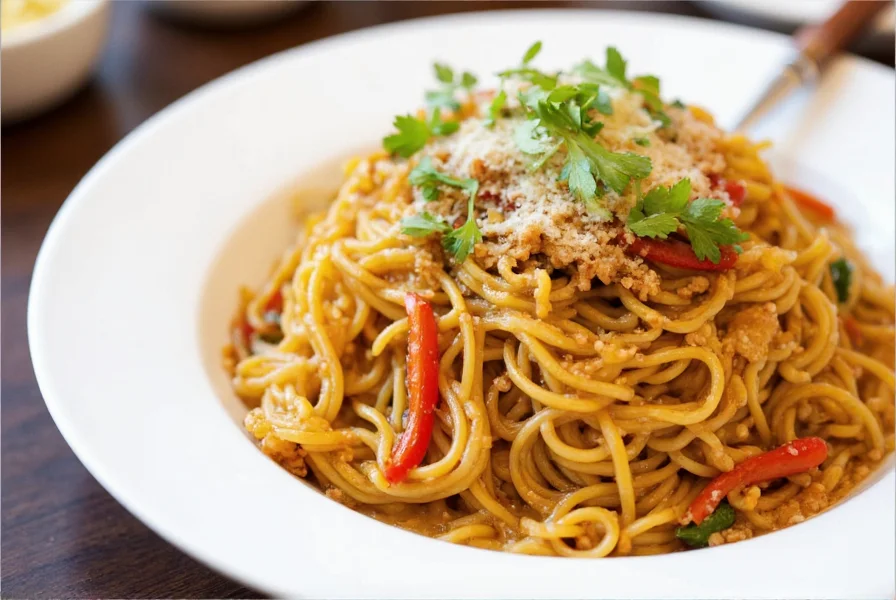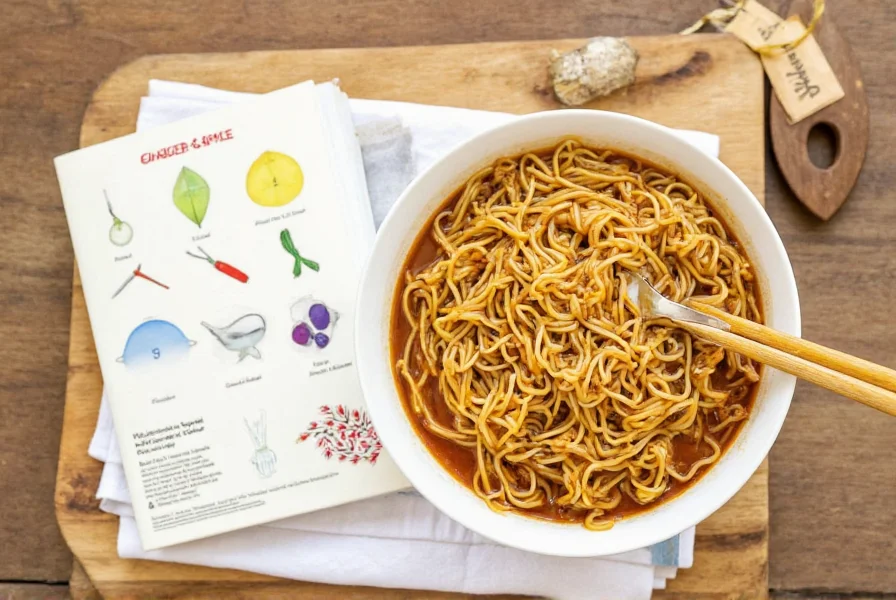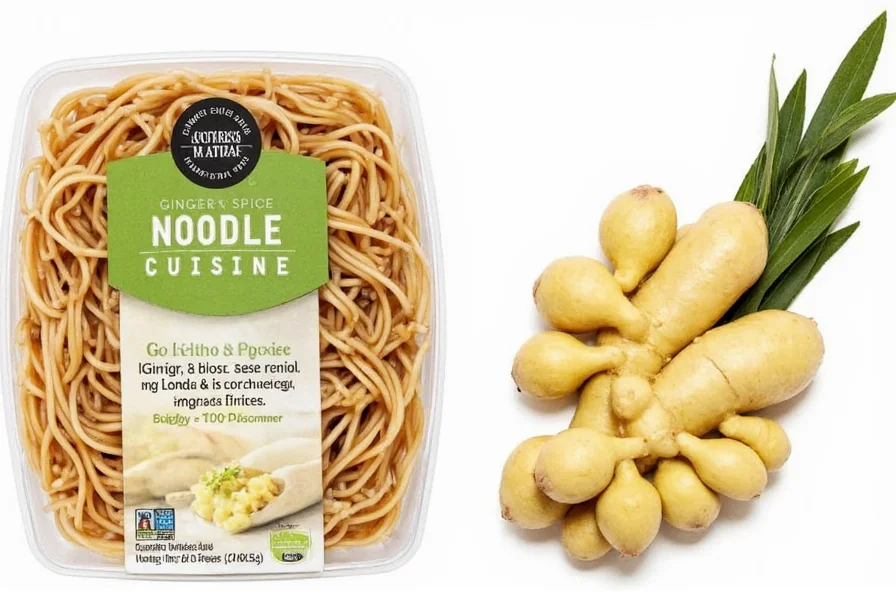When you encounter a restaurant named ginger and spice noodle & grill, you're looking at an establishment specializing in Asian cuisine that emphasizes two critical flavor components: fresh ginger and carefully balanced spice profiles. These elements work together to elevate both noodle dishes and grilled items, creating a distinctive culinary experience rooted in traditional Asian cooking principles.
The Science Behind Ginger in Asian Cuisine
Ginger isn't just a flavoring agent—it's a flavor transformer. The active compound gingerol provides that characteristic zing while shogaol (formed when ginger is cooked) delivers deeper, warmer notes. Restaurants featuring ginger and spice noodle & grill concepts understand this chemistry, using ginger at different preparation stages to create complex flavor layers.
Professional chefs working with Asian ginger noodle flavor profiles typically employ three ginger techniques:
| Preparation Method | Flavor Profile | Best Paired With |
|---|---|---|
| Raw, finely grated | Sharp, citrusy, bright | Fresh salads, dipping sauces |
| Sliced and simmered | Warm, mellow, aromatic | Noodle broths, braises |
| Fried until crisp | Deep, caramelized, complex | Grilled meats, finishing garnish |
Understanding "Spice" Beyond Heat in Noodle Dishes
When restaurants feature spice balance in grilled noodle dishes, they're referring to a sophisticated approach that goes beyond mere heat. True Asian spice profiles incorporate:
- Aromatic spices: Star anise, cinnamon, and Szechuan peppercorns that build foundational flavors
- Heat elements: Chili varieties used judiciously for dimension, not just burn
- Umami boosters: Fermented ingredients like chili bean paste that deepen flavor
The most authentic ginger and spice noodle & grill establishments create what culinary professionals call "flavor bridges"—elements that connect the ginger's brightness with the spice's warmth, often using ingredients like garlic, scallions, or fermented black beans.

Noodle Selection and Preparation Techniques
Not all noodles work equally well with ginger spice pairing in Asian cuisine. The texture and composition of the noodle significantly impacts how it carries and interacts with ginger-spice flavors:
- Rice noodles: Absorb delicate ginger flavors well but require careful timing to prevent becoming too soft
- Egg noodles: Stand up better to robust spice blends while providing a neutral canvas
- Hand-pulled noodles: Create ideal surface texture for ginger-spice sauces to cling to
Professional kitchens specializing in noodle texture and ginger spice pairing often employ a two-step cooking process: first boiling to proper doneness, then finishing in the wok with ginger-spice elements to maximize flavor absorption.
Grilling Methods That Complement Ginger-Spice Profiles
The "grill" component in ginger and spice noodle & grill establishments serves a specific purpose. Traditional Asian grilling techniques differ significantly from Western approaches:
- Teppanyaki-style griddles: Provide even heat for delicate items while allowing ginger-spice marinades to caramelize
- Charcoal grilling: Imparts subtle smokiness that complements rather than overwhelms ginger notes
- Plancha cooking: Creates beautiful sear marks while preserving the integrity of ginger-based marinades
When evaluating traditional Asian grilling techniques with ginger, note that the best establishments use ginger not just as a marinade component but as an integral part of the grilling process—sometimes placing fresh ginger slices directly on the grill to infuse the cooking surface with flavor.

Creating Authentic Flavor Balance at Home
You don't need a professional ginger and spice noodle & grill kitchen to recreate these flavors. Home cooks can achieve impressive results by focusing on three critical elements:
- Ginger preparation: Match the ginger form to your cooking method (raw for finishing, cooked for bases)
- Spice layering: Add different spice elements at different cooking stages for complexity
- Temperature control: High heat for proper wok hei (breath of the wok) without burning delicate ginger
Start with a simple ginger-spice oil—simmer fresh ginger slices in neutral oil with a few whole spices—to build a versatile base for both noodle dishes and grilled items. This approach captures the essence of what makes ginger and spice noodle & grill cuisine so distinctive.
Frequently Asked Questions
What makes ginger essential in Asian noodle dishes?
Ginger provides a bright, citrusy counterpoint to rich broths and fatty proteins in noodle dishes. Its active compounds interact with spice elements to create flavor complexity that evolves as you eat. Fresh ginger also offers digestive benefits that complement hearty noodle meals.
How do authentic ginger and spice noodle restaurants balance heat levels?
Professional kitchens balance heat through layered spice application rather than relying on a single hot element. They use multiple chili varieties at different preparation stages, combine heat with cooling elements like vinegar or citrus, and always include a neutral base (like noodles or rice) to moderate the overall experience.
What noodle types work best with strong ginger-spice profiles?
Egg noodles and hand-pulled wheat noodles generally handle bold ginger-spice flavors best due to their heartier texture and neutral flavor profile. Delicate rice noodles work well with more subtle ginger applications but can become overwhelmed by intense spice blends.
Can I recreate authentic ginger and spice flavors without specialty ingredients?
Yes, focus on fresh ginger quality and proper preparation technique rather than rare ingredients. Simmering ginger longer develops deeper flavors, while adding it late preserves brightness. Use common spices like black pepper, cumin, and chili flakes in careful proportions to build complexity without specialty items.











 浙公网安备
33010002000092号
浙公网安备
33010002000092号 浙B2-20120091-4
浙B2-20120091-4